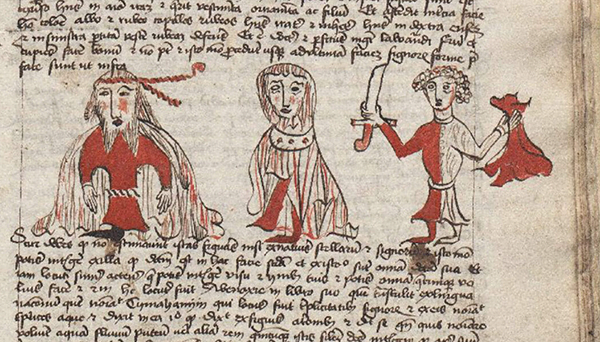A. The Four Books of the Picatrix
The Picatrix is structured into four books, each with a distinct focus:
Book I: The first book serves as an introduction, laying out the principles of magic and
astrology. It explores the relationships between celestial bodies,
talismans, and magical operations.
Book II: This section provides detailed instructions for creating
talismans and images based on
astrological principles. It outlines the procedures for invoking celestial intelligences and spirits.
Book III: Book three is a compendium of practical magic. It delves into the magical properties of various materials, plants, and incantations. The spells and rituals within cover a wide range of purposes, from healing to
divination.
Book IV: The final book is more advanced and focuses on celestial magic. It delves into advanced
astrological techniques and the properties of celestial spheres. It also offers insights into the attainment of spiritual knowledge and the secrets of the universe.
The Picatrix's unique approach lies in its strong integration of
astrology and magic. It instructs practitioners to align their rituals with celestial influences, emphasizing the timing of magical operations according to planetary and stellar configurations. This fusion of
astrology and magic reflects the
grimoire's belief in the interconnectedness of the microcosm (the practitioner) and the macrocosm (the cosmos).
Hermeticism, an esoteric and philosophical tradition with origins in Hellenistic Egypt, plays a significant role in the Picatrix. The
grimoire's teachings echo
Hermetic principles, such as the idea of a divine, all-encompassing unity and the belief in the influence of celestial forces on earthly affairs. These
Hermetic ideas are woven into the fabric of the Picatrix, underpinning its approach to magic and cosmology.
B.
Astrological Magic and
Talismans The Picatrix provides detailed instructions for creating
astrological talismans designed to harness the power of specific celestial configurations. It outlines how to craft
talismans with specific materials and incantations corresponding to the planets, stars, and constellations. These
talismans are believed to draw upon the celestial virtues and influence of the corresponding celestial bodies.
The Picatrix emphasizes the agency of celestial intelligences and spirits, who are associated with each planet and star. Practitioners are instructed to invoke these beings to aid in their magical operations. This celestial hierarchy is central to the
grimoire's astrological magic, as the practitioner seeks to establish a connection with these spiritual entities to achieve their desired outcomes.
C.
Alchemical and Philosophical Components
Hermetic and
alchemical symbolism runs throughout the Picatrix. The
grimoire often refers to
alchemical processes and the transmutation of materials as metaphors for spiritual transformation and enlightenment. This
alchemical symbolism underscores the notion that the practitioner's inner journey mirrors the cosmic processes of change and purification.
The Picatrix is built upon a philosophical foundation that combines
Hermetic,
Neoplatonic, and Aristotelian ideas. It posits that the universe is interconnected and that human beings, as microcosms, have the ability to influence the macrocosm through magic. This worldview underscores the importance of aligning one's intentions with the cosmic order to achieve desired results.


